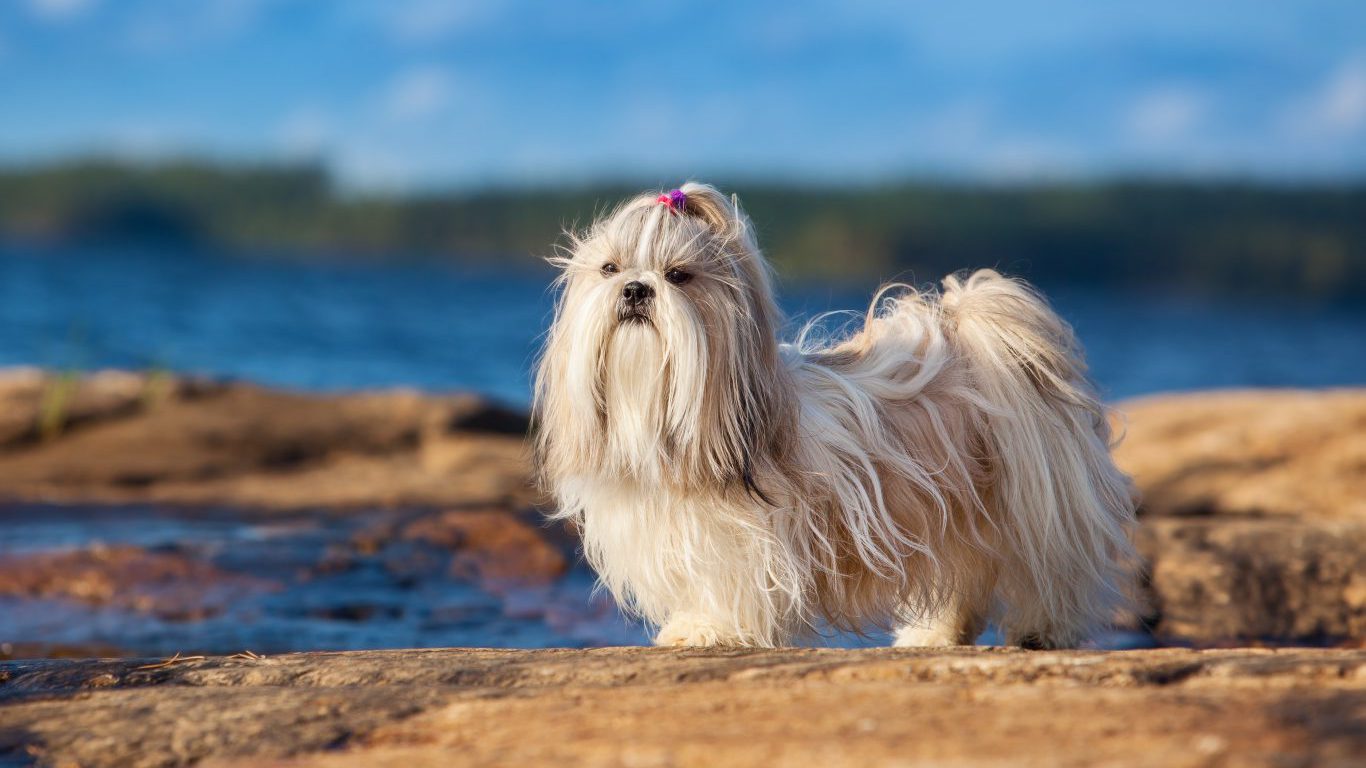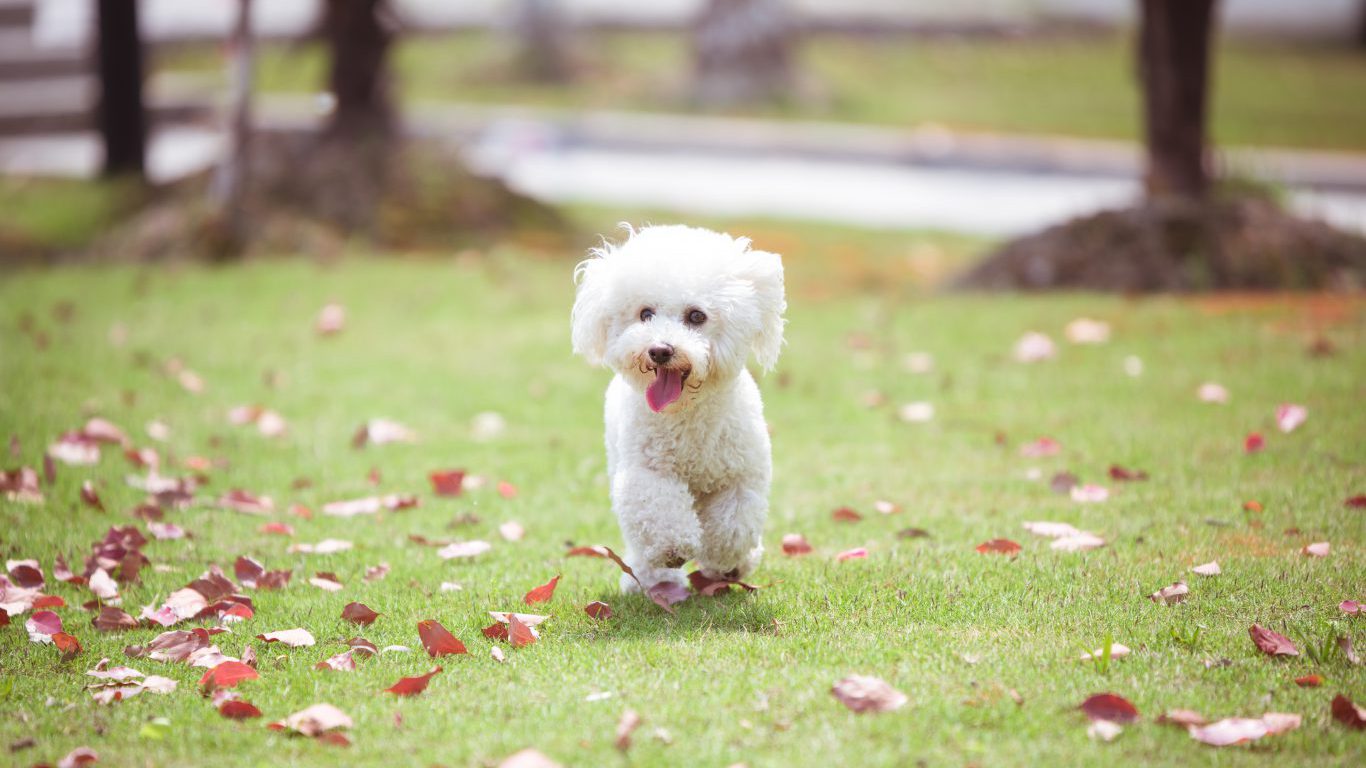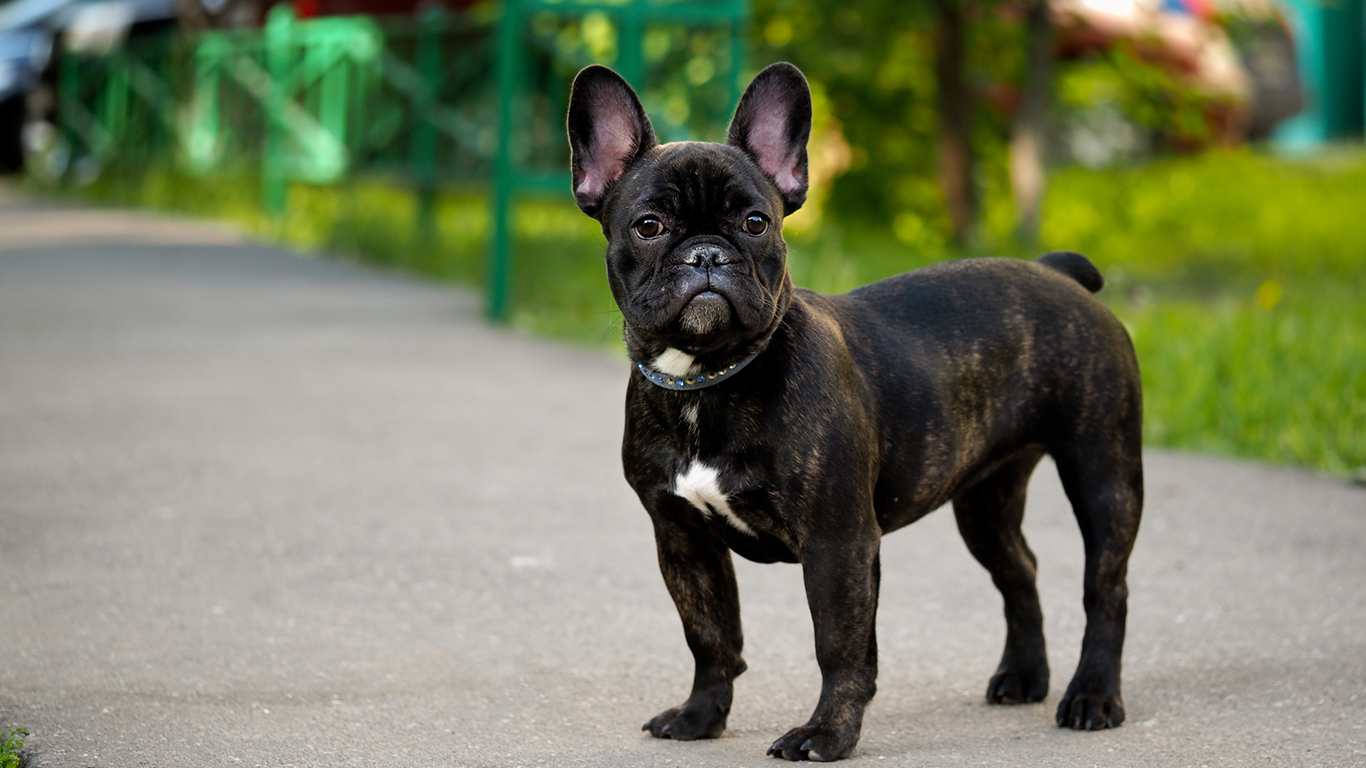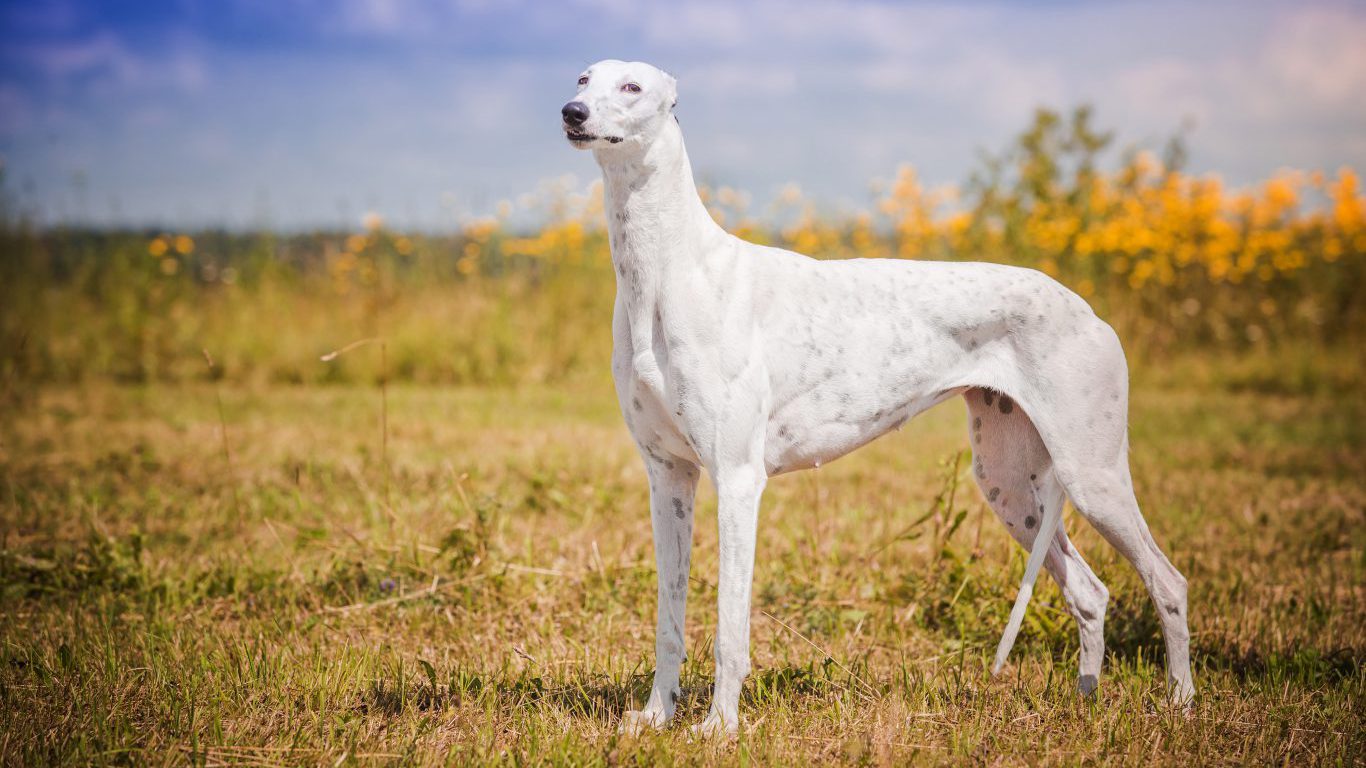
In New York, America’s largest city, many people live in small apartments. Yet more people have dogs than cats, according to the New York Economic Development Corporation. A small apartment clearly doesn’t mean you can’t have a dog — it doesn’t even mean you can’t have a big dog. But if you do live in an apartment, there are certain factors to consider when picking the right breed.
Want to stay on good terms with your next door neighbors? Then maybe you shouldn’t go for that loud barker or yappy dog. Do you live far from a park? If so, you should probably think about a dog that doesn’t need multiple long daily walks. A small apartment and an energetic breed can be a challenging combination. And if you will be living in close quarters, you might also want to think about shedding — some dogs shed constantly and others not at all. Fortunately, there are many different breeds with different characteristics and temperaments to choose from.
A surprisingly wide range of dogs are well suited to apartment living. Our list includes the Maltese, a lapdog that weighs as little as six pounds, as well as the greyhound, which weighs 10 times as much and is also the fastest breed of dog. We also have relatively young breeds and ones that have been with us for millennia — long before anybody lived in urban apartments. But before you bring your new furry friend home, make sure your apartment complex allows dogs!
Click here to see the best dogs for the indoors.
To identify which dogs are best suited to smaller spaces, 24/7 Wall St. reviewed the American Kennel Club’s list of best dogs for apartment dwellers, with information related to each breed’s size, personality, barking, and other factors. The list was created by AKC experts who used breed standards, written by the Parent Clubs, that specify size, activity level, intelligence, and other attributes.

1. Bulldog
> Height: 14-15 inches
> Weight: 40-50 pounds
> Life Expectancy: 8-10 years
The bulldog has long been associated with British culture (note the resemblance to Winston Churchill!) but it’s also one of the most popular breeds in America, according to the AKC. For apartment dwellers, the Bulldog might just have it all – gentle, not particularly active, good with children and other dogs, and quiet. However, it is significantly bigger than many of the other breeds on our list.
[in-text-ad]

2. Shih Tzu
> Height: 8-11 inches
> Weight: 9-16 pounds
> Life Expectancy: 10-16 years
The shih tzu is a toy dog breed with a friendly nature, a long life expectancy, and devoted fans. It should be well trained as it can be stubborn. It has a beautiful coat that requires regular grooming. Most owners report low to no shedding, which is certainly a plus for pet owners looking to avoid extra housework.

3. Cavalier King Charles Spaniel
> Height: 12-13 inches
> Weight: 13-18 pounds
> Life Expectancy: 12-15 years
This breed has been popular since the days of King Charles II — although he lived in a palace rather than an apartment. As a lapdog, the cavalier King Charles spaniel is small for a spaniel, although it has big eyes and a big heart.

4. Pug
> Height: 10-13 inches
> Weight: 14-18 pounds
> Life Expectancy: 13-15 years
Pugs have a lot of personality in a small package, which makes them a good pet for the space-constrained. They are intuitive dogs and sensitive to the moods of their owners, which makes them good companions. They like to play with children, but some supervision may be needed.
[in-text-ad]

5. Bichon Frise
> Height: 9.5-11.5 inches
> Weight: 12-18 pounds
> Life Expectancy: 14-15 years
With a French name and possibly Spanish origins, the bichon frise was introduced to the United States as recently as 1955. It loves human company but can become territorial. bichon frises are hypoallergenic, although they can suffer from allergies themselves and are prone to scratching and biting themselves.

6. French Bulldog
> Height: 11-13 inches
> Weight: under 28 pounds
> Life Expectancy: 10-12 years
The French bulldog is playful, good with small children, and quiet. It doesn’t need much exercise or grooming but shouldn’t be left alone for long periods as it can suffer from separation anxiety.

7. greyhound
> Height: 27-30 inches
> Weight: 60-70 pounds
> Life Expectancy: 10-13 years
The greyhound might be a surprise selection for this list given it’s the fastest dog breed with a racing speed of over 40 miles per hour. It is also the heaviest on this list. However, greyhounds do not require much space, like to sleep for much of the day, and have calm temperaments. Because of these and other qualities, retired racing greyhounds have become popular family pets.

8. Havanese
> Height: 8.5-11.5 inches
> Weight: 7-13 pounds
> Life Expectancy: 14-16 years
The Havanese, as its name might suggest, is the national dog of Cuba. It is small, sociable, and easily trained, and it is adaptable to any environment, including apartments. It is a great family pet and companion dog but shouldn’t be left alone too long.
[in-text-ad]

9. Maltese
> Height: 8-10 inches
> Weight: 6-8 pounds
> Life Expectancy: 12-15 years
The Maltese is the classic lapdog — very small and fond of enclosed spaces — and therefore it does well in apartments. It doesn’t shed and so it is also good for allergy sufferers.

10. Chinese Crested
> Height: 11-13 inches
> Weight: 8-12 pounds
Life Expectancy: 13-18 years
The Chinese crested comes in two varieties, powder puff and hairless, which may look like different breeds. Both require grooming but are adaptable and good in apartments. They enjoy companionship and like to follow humans from room to room. Although the Chinese crested has been described as elegant and graceful, a hairless won the World’s Ugliest Dog Contest three times.
Are You Ahead, or Behind on Retirement? (sponsor)
If you’re one of the over 4 Million Americans set to retire this year, you may want to pay attention.
Finding a financial advisor who puts your interest first can be the difference between a rich retirement and barely getting by, and today it’s easier than ever. SmartAsset’s free tool matches you with up to three fiduciary financial advisors that serve your area in minutes. Each advisor has been carefully vetted, and must act in your best interests. Start your search now.
Don’t waste another minute; get started right here and help your retirement dreams become a retirement reality.
Thank you for reading! Have some feedback for us?
Contact the 24/7 Wall St. editorial team.
 24/7 Wall St.
24/7 Wall St. 24/7 Wall St.
24/7 Wall St.


